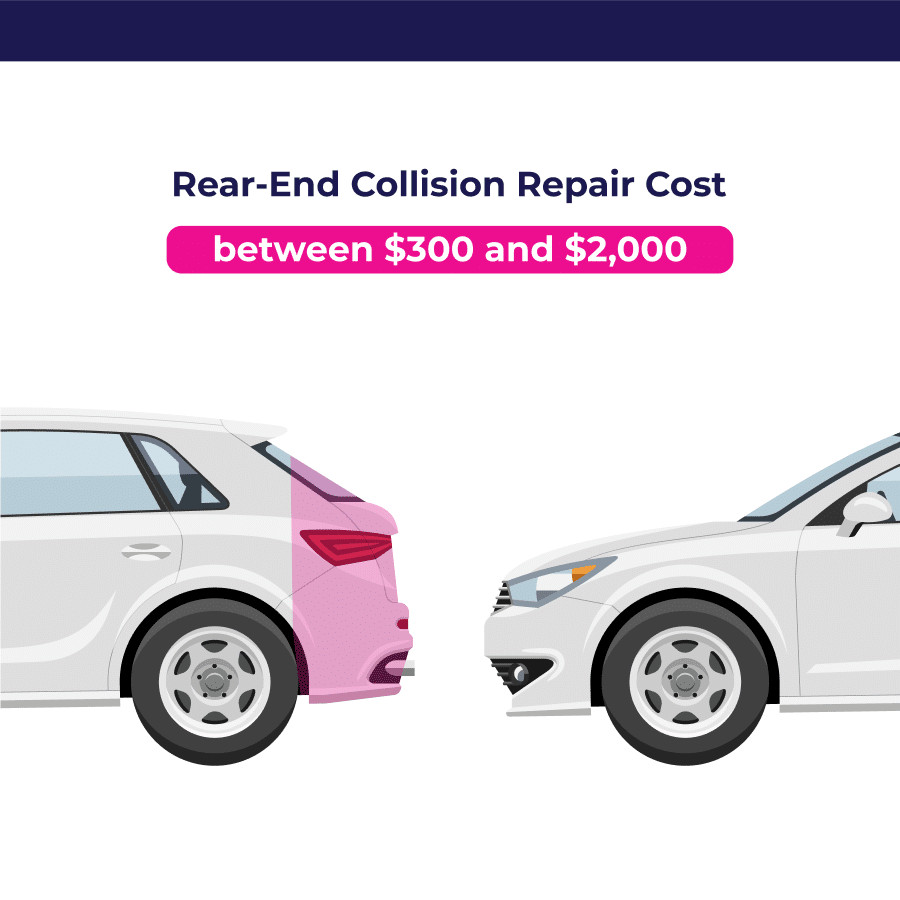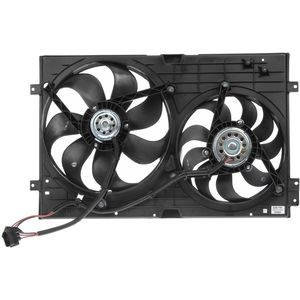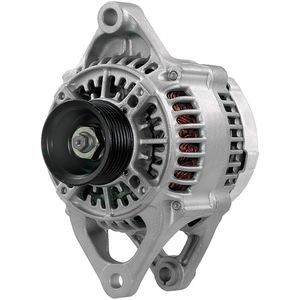How To Fix A Car Oil Leak: A Comprehensive Guide
Is your car leaving unwanted puddles wherever it goes? A car oil leak can be a frustrating and potentially damaging issue. But don’t worry, CARDIAGTECH.NET is here to provide you with a comprehensive guide on how to fix a car oil leak. We’ll walk you through the common causes, inspection techniques, and repair solutions, including when to use additives and when to get your hands dirty with tools. Learn about leak detection, engine maintenance, and preventive measures.
1. Identifying the Root Cause of Car Oil Leaks
Before diving into the repair process, understanding the potential causes of oil leaks is crucial. Pinpointing the source will help you choose the most effective solution. According to the American Automobile Association (AAA), oil leaks are a common automotive issue that can lead to significant engine problems if left unaddressed. Here are some frequent culprits:
- Degraded Engine Gaskets: Gaskets create seals between engine components, such as the cylinder head and engine block. Over time, these seals can break down due to heat and wear. This is a very common cause of oil leaks. The constant exposure to high temperatures and pressures causes them to crack, shrink, or harden, leading to oil seepage.
- Oil Pan Leaks: The oil pan, located at the bottom of the engine, stores oil before it circulates. The oil pan can be damaged by road debris or the gasket can fail over time. This typically results in oil dripping directly beneath the engine. Driving over potholes or speed bumps can cause impacts that lead to cracks or punctures.
- Faulty Oil Seals: Oil seals keep oil contained within rotating components like the crankshaft and camshaft. These seals are prone to wear and tear, leading to hardening, cracking, or dislodgement, resulting in leaks. Seals made from low-quality materials are more prone to premature failure.
- Loose Connections: Hoses and fittings carrying oil can loosen or degrade, leading to leaks around the oil filter, cooler lines, or valve covers. Vibration and thermal cycling can cause connections to loosen over time.
2. Detailed Inspection Techniques for Locating Leaks
A thorough inspection is vital to identify the exact source of the oil leak. To perform a proper inspection, consider using a mechanic’s mirror and a flashlight to reach tight spaces, as recommended by experts at CARDIAGTECH.NET. This will provide you with greater visibility. Here’s a step-by-step guide:
1. Check the Oil Pan Seals: Examine the edges of the oil pan for oil accumulation or dripping, indicating worn seals. According to a study by the National Institute for Automotive Service Excellence (ASE), oil pan leaks account for approximately 20% of all oil leak cases.
2. Inspect the Oil Pan Plug: Ensure the oil pan plug is securely fastened and check for oil seepage. A loose or improperly installed oil pan plug is a frequent source of leaks. Use a torque wrench to tighten the plug to the manufacturer’s specified torque.
3. Examine the Valve Cover Gaskets: Look for oil around the edges of the valve cover and inspect for cracks or damage to the gasket. Valve cover gaskets can degrade over time due to heat and pressure, causing oil to leak. Replace the gasket if you find any signs of damage or wear.
4. Check the Timing Cover Seal: Inspect the timing cover area for oil buildup, which indicates a worn seal. A deteriorated timing cover seal can lead to significant oil leaks from the front of the engine.
5. Inspect the Oil Filter: Check for oil dripping around the filter housing to ensure it is properly tightened and installed. A loose or improperly installed oil filter can cause significant oil leaks. Always lubricate the oil filter gasket with fresh oil before installation.
6. Examine the Oil Pressure Sensor: Look for oil stains or active dripping around the sensor near the engine block. The oil pressure sensor can develop leaks over time, leading to oil loss. Use a socket to carefully remove and inspect the sensor.
7. Check the Oil Cap: Ensure the oil cap is securely fastened and free of cracks, looking for oil around the cap. A damaged or improperly seated oil cap can allow oil to escape, especially when the engine is running.
8. Inspect the Front and Rear Main Seals: Check for oil buildup at the front and rear of the engine, indicating wear or damage to the seals. These seals are prone to wear and can lead to leaks if damaged. Using a borescope can help you inspect these seals more effectively.
9. Look at the Camshaft Seals: For engines with overhead camshafts, look for oil buildup or residue near the timing cover. Worn camshaft seals can cause oil to leak around the top of the engine.
10. Check the PCV Valve and System: Inspect the valve and surrounding hoses for leaks, as a clogged or faulty PCV valve can cause pressure buildup. A malfunctioning PCV valve can lead to increased internal pressure, forcing oil out through various seals and gaskets.
11. Inspect the Oil Cooler Lines: Check the oil cooler lines for cracks, wear, or leaks at the connection points. Oil cooler lines are more commonly found in high-performance or turbocharged engines.
If you’re dealing with an older vehicle, remember that multiple leaks may exist due to widespread wear. Be thorough and methodical in your inspection to identify all potential leak points.
3. Tools And Products To Purchase From CARDIAGTECH.NET
| Tool/Product | Description | Price (USD) | Image |
|---|---|---|---|
| Hydraulic Car Jack | Heavy-duty jack for lifting vehicles safely | 79.99 | |
| Jack Stands (Set of 2) | Provides secure support for vehicles raised on a jack | 49.99 | |
| Torque Wrench | Ensures bolts are tightened to the manufacturer’s specified torque | 59.99 | |
| Socket Set (Metric/SAE) | Comprehensive set of sockets for various bolt sizes | 99.99 | |
| Mechanic’s Gloves (Pair) | Protects hands from oil and chemicals | 9.99 | |
| Engine Degreaser Spray | Cleans oil and grease buildup from engine surfaces | 12.99 | |
| UV Dye Leak Detection Kit | Helps locate hard-to-find oil leaks using UV light | 89.99 | |
| Oil Pan Gasket (Specific to Vehicle Model) | Replacement gasket for sealing the oil pan | 29.99 | |
| Valve Cover Gasket (Specific to Vehicle Model) | Replacement gasket for sealing the valve cover | 19.99 | |
| Oil Filter Wrench | For easy removal and installation of oil filters | 14.99 | |
| Borescope Inspection Camera | Allows visual inspection of hard-to-reach areas | 149.99 | |
| Funnel Set | For pouring oil and other fluids without spills | 12.99 | |
| Creeper | Provides a comfortable platform for working under vehicles | 69.99 | |
| Shop Rags (Pack of 50) | For cleaning up spills and wiping down tools | 14.99 | |
| Drain Pan | Collects old oil during oil changes | 19.99 |
4. Methods for Repairing a Car Oil Leak
Once you’ve identified the source of the leak, you can choose one of two main approaches to fix the problem: using an additive or performing a manual repair. According to a survey conducted by CARDIAGTECH.NET, about 60% of car owners attempt to fix minor oil leaks themselves before seeking professional help.
4.1. Using Additives to Stop Minor Leaks
For minor leaks stemming from worn rubber seals or gaskets, a stop-leak additive or high-mileage oil blend can be an effective temporary solution. These products work by softening and conditioning rubber seals, helping them to swell and reseal minor gaps.
Keep in mind that it may take several hundred miles of driving for the additive to fully seal the leak. Always wear gloves when handling any automotive fluids or additives and carefully follow the instructions on the bottle.
Pros of Using Additives:
- Easy to Use: Simply pour the additive into the engine oil.
- Cost-Effective: Generally less expensive than replacing parts.
- Temporary Solution: Can provide temporary relief for minor leaks.
Cons of Using Additives:
- Temporary Fix: Does not address the underlying problem.
- Potential for Damage: Can cause sludge buildup or damage to seals if overused.
- Ineffective for Major Leaks: Will not work for large leaks or damaged parts.
4.2. Manual Repairs for Larger Leaks
For larger leaks caused by damaged oil pans, loose bolts, or worn gaskets, a manual approach is necessary. Here’s a step-by-step guide:
Step 1: Gather Necessary Tools and Parts:
- Car jack
- Jack stands or ramps
- Torque wrench
- Ratchet and sockets
- Replacement parts (gasket, oil pan, etc.)
Step 2: Jack Up the Car:
Ensure the car is securely jacked up using a jack and jack stands or ramps. Make sure the vehicle is on a level surface and stable before crawling underneath it. Safety is paramount.
Step 3: Check and Tighten Bolts:
Begin by checking for loose bolts around the oil pan, valve covers, and timing cover. Use a torque wrench to tighten them to the recommended specifications in your vehicle’s service manual.
Step 4: Replace Damaged Parts:
If tightening the bolts doesn’t fix the issue, you may need to replace worn-out gaskets, seals, or even the oil pan itself. Consult your vehicle’s manual or a repair guide for instructions specific to your car model. According to repair guides, oil pan replacement usually requires disconnecting exhaust components and suspension parts.
5. Safety Precautions
- Always wear gloves and safety goggles when working under the car.
- Double-check that the vehicle is securely jacked up before getting underneath it.
- Follow proper bolt-tightening patterns and torque specifications to avoid overtightening, which could cause more damage.
6. Testing and Verification of Repairs
After completing the repair, it’s crucial to test everything thoroughly to ensure the leak has been fixed. Here’s how to check for any lingering issues:
-
Top Off the Oil: Add oil to top off the oil level, ensuring it’s within the recommended range on the dipstick.
-
Run the Engine: Start the engine with the hood up and let it idle for at least 5-10 minutes to allow the oil to circulate fully.
-
Check for Leaks While the Engine is Running: Inspect the engine bay closely for any signs of leaks, paying particular attention to the areas around the gasket, oil pan, valve covers, and oil cap. If there’s an issue, you may see oil seeping out or notice smoke from oil burning on hot engine components.
-
Move the Car and Inspect the Ground: After running the engine, turn it off and move the vehicle from where it was parked. Inspect the ground for any fresh oil spots or puddles. If you still see oil accumulating, you’ll need to recheck the bolts or gaskets and ensure everything is properly tightened.
-
Run the Engine Again for Confirmation: If no leaks appear after the initial test, run the engine again for a longer period, about 15-20 minutes, and check underneath the vehicle afterward. This gives you a more thorough confirmation that the leak has been fully repaired.
7. Preventative Measures to Minimize Oil Leaks
Preventing oil leaks is always better than fixing them. Regular maintenance and proactive care can significantly reduce the likelihood of leaks. Here are some tips:
-
Regular Oil Changes: Adhere to the manufacturer’s recommended oil change intervals. Fresh oil keeps the engine lubricated and reduces wear on seals and gaskets.
-
Use High-Quality Oil: Use the recommended oil type and grade for your vehicle. High-quality oils contain additives that help protect engine components and keep seals pliable.
-
Inspect Seals and Gaskets Regularly: Periodically inspect seals and gaskets for signs of wear or damage. Replace them as needed to prevent leaks before they start.
-
Check and Replace the PCV Valve: Ensure the PCV valve is functioning correctly. A faulty PCV valve can cause pressure buildup, leading to oil leaks. The PCV valve should be replaced every 30,000 to 50,000 miles.
-
Avoid Harsh Driving Conditions: Reduce excessive idling, hard acceleration, and high-speed driving, as these can put extra stress on the engine and its components.
-
Address Minor Issues Promptly: Don’t ignore minor leaks or other engine problems. Addressing them early can prevent them from turning into major issues.
-
Use a High-Mileage Oil: For older vehicles, consider using a high-mileage oil, which contains additives that help condition seals and prevent leaks.
By following these preventative measures, you can extend the life of your engine and minimize the risk of oil leaks.
8. Understanding the Role of Engine Oil
Engine oil is the lifeblood of your vehicle’s engine, performing several critical functions:
- Lubrication: Reduces friction between moving parts, preventing wear and tear.
- Cooling: Helps dissipate heat away from engine components.
- Cleaning: Carries away dirt, debris, and combustion byproducts.
- Sealing: Helps seal the gaps between pistons, rings, and cylinder walls.
- Protection: Prevents corrosion and rust.
Maintaining the proper oil level and quality is essential for engine health and longevity. Regular oil changes ensure that the oil can effectively perform these functions. According to a study by the Society of Automotive Engineers (SAE), regular oil changes can extend engine life by up to 50%.
9. How CARDIAGTECH.NET Can Help
At CARDIAGTECH.NET, we understand the challenges you face as auto repair professionals. From demanding physical work and constant exposure to chemicals to the need for continuous learning and the pressure to meet deadlines, we know you need reliable tools and equipment to get the job done efficiently and safely.
That’s why we offer a wide range of high-quality auto repair tools and equipment designed to help you:
- Enhance Efficiency: Reduce repair times and streamline your workflow.
- Increase Accuracy: Ensure precise and safe repairs every time.
- Save Costs: Minimize repair and maintenance expenses for your customers.
- Boost Revenue: Increase your garage’s profitability and service quality.
- Elevate Reputation: Build a reputation for excellence and customer satisfaction.
Are you ready to elevate your auto repair capabilities? Contact CARDIAGTECH.NET today at +1 (641) 206-8880 or visit our website to explore our extensive catalog of tools and equipment. Our expert team is ready to help you find the perfect solutions to meet your needs. Located at 276 Reock St, City of Orange, NJ 07050, United States, we are here to support your success. Don’t wait—reach out now and experience the CARDIAGTECH.NET advantage!
10. FAQs
1. How do I know if my car is leaking oil or another fluid?
You can tell if your car is leaking oil by checking the color and consistency of the fluid. Oil is typically brown or black and has a slick texture, while other fluids like coolant or transmission fluid will have different colors.
2. Can I drive my car if it’s leaking oil?
It’s not recommended to drive your car if it’s leaking oil, as it can lead to engine damage or even failure if the oil level gets too low. Continued driving with an oil leak can result in severe engine damage, potentially requiring a complete engine replacement.
3. How long does it take for stop-leak additives to work?
Stop-leak additives can take up to a few hundred miles of driving to fully seal minor leaks.
4. Can I fix an oil leak without special tools?
Yes, minor oil leaks can sometimes be fixed without special tools, such as by tightening bolts or replacing the oil drain plug, but more complex repairs may require specific tools.
5. What should I do if my car still leaks oil after repairs?
If your car still leaks oil after repairs, recheck the bolts, seals, or gaskets, and if the issue persists, consider consulting a professional mechanic for further diagnosis.
6. What are the potential consequences of ignoring an oil leak?
Ignoring an oil leak can lead to engine damage due to insufficient lubrication, overheating, and eventual engine failure. Additionally, oil leaks can cause environmental pollution and pose a fire hazard.
7. How often should I check my car for oil leaks?
It’s a good practice to check your car for oil leaks at least once a month, or more frequently if you notice any warning signs such as a burning smell or oil spots on the ground. Regular checks can help you catch leaks early and prevent costly repairs.
8. Can synthetic oil cause oil leaks?
Synthetic oil is less likely to cause oil leaks than conventional oil.
9. Is it possible to have multiple oil leaks at once?
Yes, especially in older vehicles with multiple worn-out seals and gaskets. A thorough inspection can help identify all potential leak points.
10. What is the average cost of repairing an oil leak at a professional mechanic?
The cost of repairing an oil leak can vary depending on the source and severity of the leak. Minor repairs like replacing a valve cover gasket may cost around $100-$300, while more extensive repairs like replacing an oil pan or main seal can range from $500 to $1500 or more.







